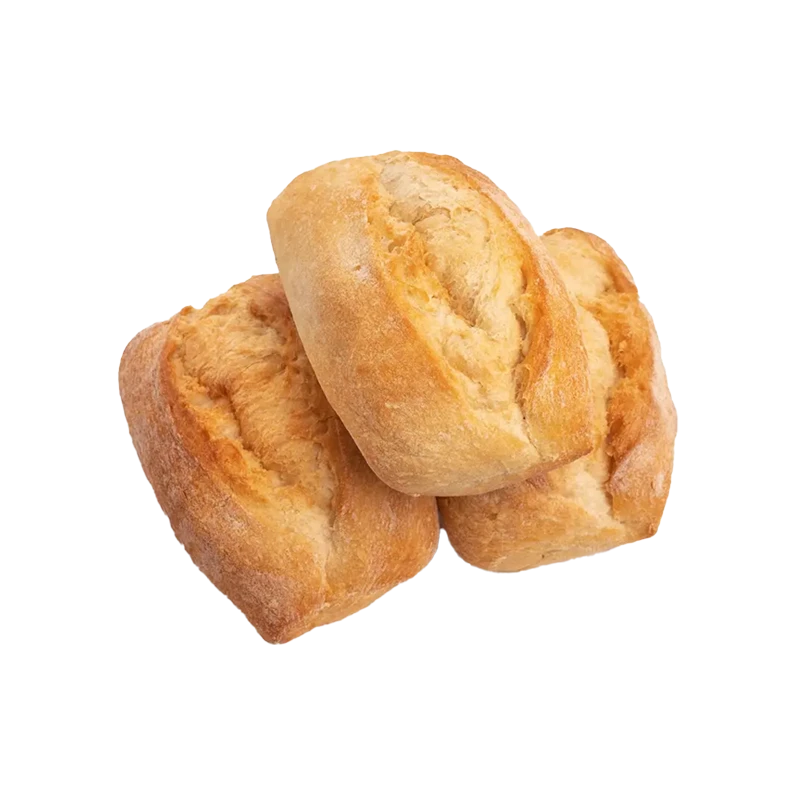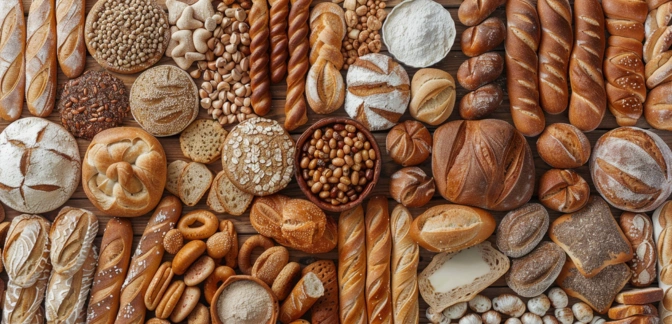Buns — Nutrients, Health Benefits, And Shopping Tips

Written by Listonic Team
Last update on September 4, 2024
Nutrients
Nutrition facts
Amount per 100 g
Calories
🔥 297 kcal
| Nutrition per: 100 g | Value | % Daily Value* |
|---|---|---|
| Carbs | 52 g | 18.91% |
| Fiber | 2 g | 7.14% |
| Sugars | 7 g | 14% |
| Glycemic Index | 70 | - |
| Protein | 10 g | 20% |
| Sodium | 572 mg | 24.87% |
| Total Fat | 5 g | 6.41% |
*The % of Daily Value (DV) tells you how much a nutrient in a serving of food contributes to a daily diet. 2,000 calories a day is used for general nutrition advice.
10 g
🧀 Good Protein Content
Key takeaways
Health benefits
- Provides energy from carbohydrates, making them a quick source of fuel for the body and brain.
- Versatile and convenient, serving as a base for a variety of fillings and toppings, including nutritious options like lean proteins and vegetables.
- Can be a source of fiber if made with whole grains, supporting digestive health and promoting regular bowel movements.
- Contains essential vitamins and minerals if made with enriched flour, providing nutrients such as B vitamins and iron.
Health risks
- High carbohydrate content which can cause rapid spikes in blood sugar levels, particularly concerning for diabetics or those on low-carb diets.
- Low nutrient density particularly in buns made from refined white flour, lacking essential nutrients and fiber.
- High sodium content in some commercial buns, which can contribute to hypertension and increased cardiovascular risks.
- Gluten content which makes them unsuitable for individuals with celiac disease or gluten sensitivity, potentially causing digestive discomfort and other health issues.
How to choose buns
Buns should be soft to the touch and exhibit a slight springiness, signifying freshness. Aim for a golden-brown surface, indicative of perfect baking. A pleasant yeasty aroma is a hallmark of skilled baking.
Shun buns that look flat or feel doughy, which may indicate they were underbaked. A properly baked bun should rebound when pressed gently and not leave a dent. Choosing buns made from whole grains enhances their nutritional value.

How to store buns
Buns should be stored at room temperature in a bread box or a paper bag to keep them fresh. Plastic bags can be used if you prefer a softer texture. Buns can last up to a week when stored properly.
Refrigeration can make buns stale more quickly, so it’s best to avoid this. Humidity can cause mold growth, so storing buns in a dry place is essential. For longer storage, freezing buns in airtight bags is effective.
✅ Extra Tip
How long do they last?
Buns can last for 3-5 days at room temperature when stored in an airtight container or plastic bag. For longer storage, buns can be frozen for up to 3 months. Ensure they are tightly wrapped to prevent freezer burn.
What to do with leftovers?
Leftover buns can be used in a variety of ways. Turn them into breadcrumbs by drying and grinding them, perfect for breading meats or topping casseroles. Buns can also be sliced and toasted for homemade croutons to add to salads or soups.
Use leftover buns to make French toast or a bread pudding by soaking them in a custard mixture and baking until golden. They can also be used to make mini sandwiches or sliders with your favorite fillings. If you have a lot of buns, consider using them as a base for garlic bread by spreading with butter and garlic, then toasting until golden. Buns can also be used in a burger or sandwich with a variety of toppings, or simply frozen for later use.
👨⚕️️ Medical disclaimer
Discover products from other categories
Listonic Team
Fact-checked
Our editorial team checked this article to make sure it was accurate at the time of publishing it.
Get the top-rated shopping list app

buns
1 piece







